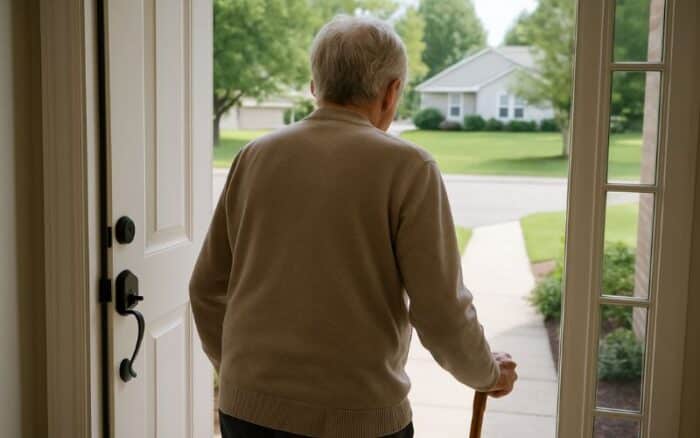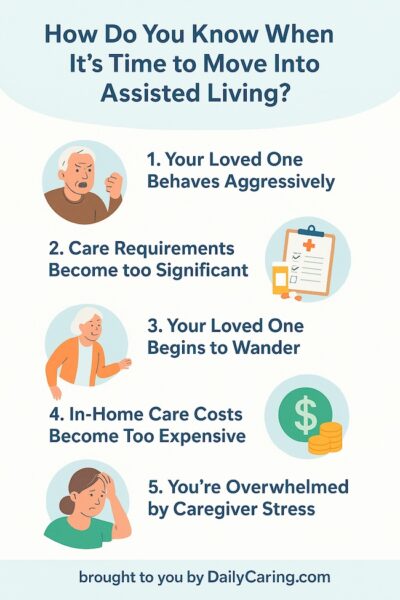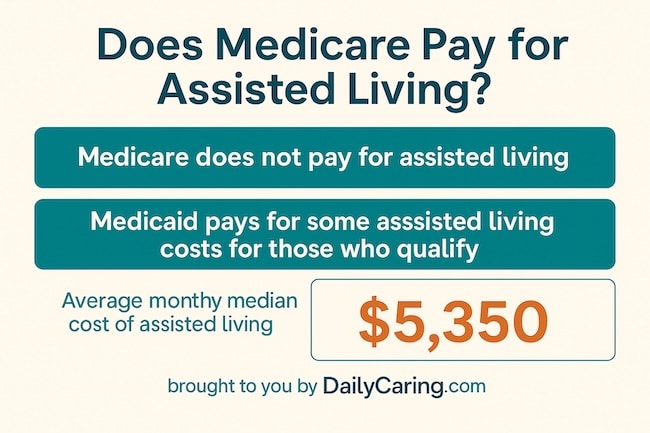Moving to assisted living is a complex and often heart-wrenching decision for caregivers. Guilt, promises made, and feelings of obligation make it even harder.
Key Takeaways: How to Know When Moving to Assisted Living is the Best Option?
– When Aggression Becomes a Safety Issue.
– When the Care Needs Become Overwhelming.
– When They Start to Wander.
– When Home Care Becomes Too Expensive.
– When You’re Overly Burned Out.
Because there are so many emotions involved, it can be tough to know when a move to assisted living is needed. But as caregiving experts will tell you, sometimes it’s the best decision you can make for all parties…

5 Ways to Know if Moving to Assisted Living is Necessary
1. When Your Loved One Behaves Aggressively, It’s Time to Consider Moving to Assisted Living
Some older adults, often those with dementia, may behave aggressively or violently.
If trying different ways to reduce this behavior or medication doesn’t help, it puts you and the person in danger of getting seriously injured.
It also adds significant emotional stress to an already stressful situation.
2. The Care Requirements Become too Significant for Safe Home Care
Over the years, most older adults experience a decline in their physical and mental health and abilities.
Unfortunately, no matter how high the quality of care, aging and serious diseases will keep progressing.
One day, your loved one’s care needs may become more than you can safely handle at home.
For example, if someone now needs constant supervision and care (including waking many times at night), moving to assisted living may be required. It’s challenging for one or two people to sustain that intensity of care over the long term.
Or, if your loved one is significantly larger or heavier and develops mobility issues, it will become physically impossible or dangerous for you to help them move around.

3. Your Loved One Begins to Wander
Many people with dementia want to wander or feel like they need to go somewhere.
Unfortunately, the damage in their brain means they typically don’t know how to get places, how to get back home, or how to avoid accidents or injury.
People with dementia can often get outside the house in the blink of an eye – or in the time it takes for you to use the restroom or get them a glass of water.
If you’ve secured the house as much as possible, but they’re still able to get out, it may be time to consider a move to a fully secured memory care community for their safety.
4. Moving to Assisted Living Seems Inevitable When In-Home Care Costs Become Too Expensive
Hiring an in-home caregiver is expensive. As older adults require more care, they’ll need increasingly more help.
Over time, the cost of hiring caregiving help can exceed the available financial resources.
When that happens, it may be financially necessary to move to an assisted living community.
Assisted living costs are also high, but may be more affordable than the amount of in-home care that’s needed.
VIDEO: Moving to Assisted Living – When is it Time?
5. You’re Overwhelmed by Chronic, Severe Caregiver Stress
Feeling stressed from the responsibility and hard work of caregiving is to be expected, but when stress levels are too high for too long, it can seriously affect your health and well-being.
When that happens, your ability to care for your loved one can be significantly diminished, sometimes to the point where you’re no longer able to care for them safely.
Deciding to move a loved one to assisted living is never easy. But when safety, care needs, or caregiver stress reach a tipping point, it may be the best option for everyone involved.
Watching for these signs can help you make a thoughtful, informed decision that prioritizes both your loved one’s well-being and your own.
Recommended for you:
- 3 Reasons to Stop Feeling Guilty About a Move to Assisted Living
- When to Move to Assisted Living? Advice from a Social Worker
- How to Choose an Assisted Living Facility: Helpful Checklist and Tips
About the Author

Connie is the founder of DailyCaring.com and was a hands-on caregiver for her grandmother for 20 years. (Grandma made it to 101 years old!) She knows how challenging, overwhelming, and all-consuming caring for an older adult can be. She also understands the importance of support, especially in the form of practical solutions, valuable resources, and self-care tips.













This article really hits home. It’s often hard for families to recognize the right time for assisted living, especially when emotions are involved. We’ve seen many similar situations at our residential care home in Fresno, where a supportive environment has made a huge difference for both seniors and their loved ones.
For way too many of us on fixed incomes, the need to move to assisted living may well become a reality but we simply do not have the funds to do so. Here in AZ the last figures I saw are that the annual average cost of Assisted Living is $72,000! We make $34,000. Likewise, while home health aides could help, once again, with little in savings, the money runs out before the need ends. Oh – yes, many states have a Medicaid program for Long Term Care – but, again here in Tucson, the 4 that will accept ALTCS= AZ Long Term Care System – are not what most of us would consider safe, comfortable living. So, how about an article giving advice for those of us in this boat as to how to care for each other as seniors with no family, few friends and little money
It’s great that you’re thinking about this ahead of time. Unfortunately, long term care is expensive and largely isn’t covered by government benefits programs.
The village model is one way to get different types of support to help stay in the home for longer. More info here – Seniors Are Aging at Home with Help from a Village https://dailycaring.com/how-the-village-movement-is-helping-seniors-age-in-place/
Another option is to contact your local Area Agency on Aging to find out about organizations and programs that might be helpful – Area Agency on Aging: Resources for Seniors https://dailycaring.com/area-agency-on-aging-resources-for-seniors/
Because there aren’t more comprehensive long term care programs available, it will take work to put together a plan that will give you the care you expect to need within your budget. The best options may be to use a variety of free programs and lower cost paid options that will meet your future care needs.
Another resource that might be helpful is Carol Marak’s website. She focuses on planning ahead for solo aging – https://www.carolmarak.com/